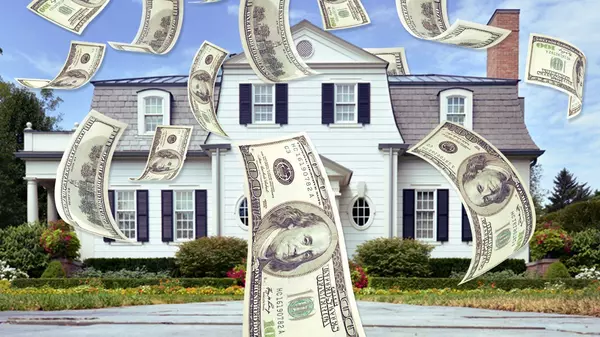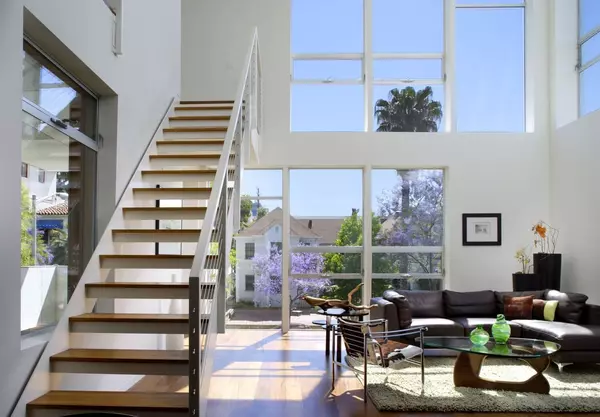How Much Could a Private Listing Cost You? More Than $300K in This Market

In San Francisco, privately listing your house could cost you the price of two Tesla Cyberbeast trucks—and then some.
A new analysis from the San Francisco Association of Realtors® finds that homes listed on the multiple listing services included in the analysis sell for roughly $302,000 more than those sold off-market, underscoring the power of market transparency in a city where information is everything.
It’s a striking finding, given that the difference is just $66,000 shy of the current national median sale price of $368,000, according to data from Realtor.com®.
And yet, private listings continue to pervade luxury and ultracompetitive markets, like San Francisco’s, where some sellers and buyers prefer quieter, more exclusive transactions.
These sales—known as pocket listings or off-market listings—never hit the MLS. Instead, they’re privately shopped between agents and their clients.
But it’s that quiet shopping that could be costing sellers. The new findings prove that competition, however noisy it may be, still pays.
What openness earns in San Francisco
The SFAR partnered with RealReports, a property data provider, to analyze every residential sale in San Francisco County from 2022 to 2024, with one question in mind: Does competition really pay?
A simple enough question that required a monumental commitment to answer.
“We really made a commitment that we were going to start talking about this, even if the results weren’t what people expected or didn’t want to hear,” says SFAR CTO Jay Pepper-Martens, who co-led the analysis. “We weren’t going to do a little slice of 10 minutes. We were going to do three years of a full study.”
But pulling three years of off-market and on-market sales data, even for a moderately sized area like San Francisco County, was a big ask. It required collaboration across MLS, title, and data vendors and rigorous data cleaning.
To keep the playing field fair, the team excluded the outliers—the top 5% of luxury sales, and trust and estate transfers—focusing only on typical, arm’s-length transactions.
Even then, the divide was stark. In 2022, off-market listings accounted for more than 20% of listings in San Francisco, yet those exposed to open bidding on the MLS outperformed them by an average of $211,000.
By 2024, the share of off-market listings had fallen to just over 16% of listings, but the premium of listings on the MLS increased to $394,000. And over the three-year period the analysis examined, listings on the MLS out-performed those off-market by an average of $302,000.
The results are hard to ignore. While there has always been an “intuition” that public listings created an environment in which sellers could get higher sales prices, here was the proof: When listings compete in the open, sellers win.
The rise of pocket listings
So, why would a seller risk not getting top dollar for their home?
At the height of the COVID-19 pandemic, sellers across the country were inundated—in some cases, fielding a flood of offers within hours of going live on the MLS, turning what might have otherwise been a straightforward sale into a frenzy.
Pocket listings emerged as a kind of pressure valve to that chaos. By keeping homes off the public MLS and sharing them privately among select agents and buyers, sellers may have been able to get the deal done faster and with less noise.
“Speed’s a factor,” says Pepper-Martens. “It might be faster where you can just say, 'I’m going to get rid of this particular asset, I think I know someone who knows someone who knows someone,' bada-bing, bada-boom, and then a deal gets done.”
That exclusivity came with cultural cachet.
“There is that velvet-rope mentality ... especially in certain price points and certain cities. I would say San Francisco is one of them,” adds SFAR's Hud Bixler.
It’s hard, impossible even, to compare off-market studies without putting their data and definitions under a microscope. But Bright MLS, which serves the mid-Atlantic, found that “office exclusive” listings—listings that are not listed on an MLS and are only marketed within the listing agent's own brokerage—made up just 3% to 5% of listings during the same period when San Francisco’s were hovering around 18%
That gap underscores deeper questions about transparency and equity across the country. Why should a seller’s visibility—and their potential return—depend on where they live or how their local market measures what’s seen and unseen?
“We believe it’s our duty to provide that transparency and for fair housing reasons and others,” Bixler says. “It’s not to call anybody out on whatever their practices are. It’s more like, our job is to put out the unvarnished truth.”
And that hard truth could have bigger implications down the line.
“If people are transacting off-market, is it really certain what the value of homes are? Those prices appear to be lower than what you would transact on the open market,” he says. “There’s a sort of common good that’s achieved when you have a complete market picture.”
Without that visibility, he warns, “it becomes very hard to assess things.”
The San Francisco market backdrop
And assessing things may be more important than ever, as a market rocked by the push-and-pull factors of the pandemic and the booms and busts that have followed tries to inch back toward neutral.
“San Francisco’s housing market dynamics from 2022 to 2024 represent a return to normalcy, or perhaps the new normal,” says Jake Krimmel, senior economist at Realtor.com. “The pandemic and remote work hit the San Francisco housing market particularly hard.”
Early in that period, tech layoffs and stalled return-to-office plans drove demand down.
“Inventories swelled and price growth moderated,” Krimmel notes, “and higher interest rates only added to the slowdown.” By late 2023, however, hybrid work and urban revival helped turn momentum around.
“As tech workers' dreams of 100% remote work or the digital nomad lifestyle faded, and major employers began moving to a hybrid-work posture, housing demand picked back up and city life started to return to normal.”
That rebound came with renewed competition, especially for those who played in an open field. Homes that reached the MLS were the ones visible to returning buyers. Agents could market them widely, appraisers could leverage them to benchmark more accurately, and bidding returned to form.
And today, sale prices in early 2025 are about 13% higher than in 2022.
The context reinforces the study’s findings. In turbulent markets, transparency is a stabilizer. And for a city marked by both innovation and inequality, the data suggests that what keeps the housing market strong is keeping it open.
Categories
Recent Posts











"My job is to find and attract mastery-based agents to the office, protect the culture, and make sure everyone is happy! "
